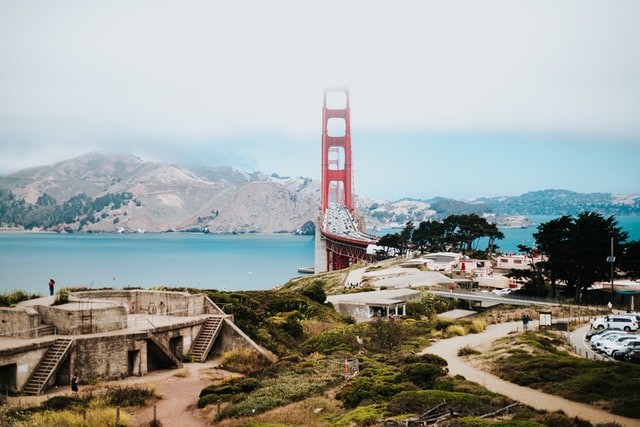When urban and natural emissions hang out at night
Submitter
Fast, Jerome D
— Pacific Northwest National Laboratory
Area of Research
Aerosol Processes
Journal Reference
Zaveri R, J Shilling, J Fast, and S Springston. 2020. "Efficient Nighttime Biogenic SOA Formation in a Polluted Residual Layer." Journal of Geophysical Research: Atmospheres, 125(6), e2019JD031583, 10.1029/2019JD031583.
Science

Figure 1. In the evening, urban emissions from the San Francisco Bay Area and isoprene released from plants in the Coast Mountain Range in Northern California travel over the state’s Central Valley and form secondary organic aerosols. Credit: Devin Avery on Unsplash
Human-caused pollution exerts an important but uncertain control on the formation of secondary organic aerosol particles from atmospheric oxidation of volatile organic compounds naturally emitted by plants. A research team led by scientists at the U.S. Department of Energy examined the interaction between evening emissions from the San Francisco Bay Area and biogenic isoprene released by trees in the Coast Range mountains as the gases traveled over the Sacramento Valley through the course of a night. They found that nitrogen oxides (NOx) in the polluted air facilitated the nighttime oxidation of isoprene to form secondary organic aerosols in high yields, with efficiencies comparable to photochemical formation pathways that operate during the daytime.
Impact
Plant-derived, or biogenic, secondary organic aerosols are a major component of submicron-sized atmospheric aerosols, which influence climate by interacting with solar radiation and serving as seeds upon which cloud droplets can form. It is crucial to understand how human-caused emissions perturb the natural formation of secondary aerosols from plant-produced volatile organic compounds, such as isoprene. This study showed that human-caused NOx emissions can interact with isoprene at night to substantially increase biogenic secondary organic aerosol formation. These results will enable more accurate predictions of secondary organic aerosol formation in atmospheric models and improve simulations of how aerosols affect Earth’s energy balance.
Summary
Secondary organic aerosols are produced when oxidation products of volatile organic compounds condense from the gas phase to the particle phase. The influence of urban emissions on the formation of natural, plant-derived secondary organic aerosols is one of most important, but still uncertain, aspects of atmospheric aerosols. While much work has been carried out on photochemical formation pathways in the presence of sunlight, processes controlling secondary organic aerosol formation at night remain relatively poorly understood.
Researchers investigated the enhanced nighttime biogenic secondary organic aerosols observed in a polluted residual layer over California’s Central Valley during the DOE 2010 Carbonaceous Aerosols and Radiative Effects Study. Model analysis of this layer showed San Francisco Bay Area emissions mixed with isoprene emissions from the Coast Range the previous evening before arriving over Sacramento in the morning. Taken together, these observations of natural and human-caused emissions indicated that up to 2.5 µg m-3 of secondary organic aerosol formed at night from isoprene reacting with nitrate radicals (NO3) from human-caused emissions. Further analysis revealed the amount and form of nitrates in the aerosols. Assuming the secondary organic aerosol was formed from isoprene oxidation by NO3, the researchers estimated high mass yields of up to 55 percent, consistent with previous field estimates. Overall, the findings showed that the efficiency of nighttime biogenic secondary organic aerosol formation was comparable to the range previously estimated for the formation of secondary organic aerosol from mixed emissions in the same study during the daytime.
Keep up with the Atmospheric Observer
Updates on ARM news, events, and opportunities delivered to your inbox
ARM User Profile
ARM welcomes users from all institutions and nations. A free ARM user account is needed to access ARM data.


















